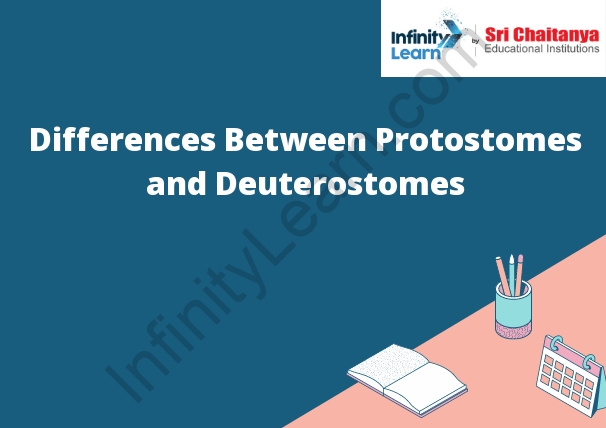Table of Contents
Protostomes: Cleavage Types are Seen in Both Deuterostomes and Protostomes
Cleavage is the process of cell division in early embryonic development. The cells of the embryo are initially small and uniform, and they rapidly divide to form a larger and more complex organism. Cleavage occurs in a specific pattern, and it is affected by the type of embryo and the environment in which it develops.
In deuterostomes, cleavage is spiral and the cells are arranged in a column around the central yolk. This type of cleavage is seen in both vertebrates and invertebrates. In protostomes, cleavage is radial and the cells are arranged in a disk around the central yolk. This type of cleavage is seen in worms, insects, and other invertebrates.
The difference in cleavage patterns is due to the different ways that deuterostomes and protostomes develop. Deuterostomes develop from the posterior end of the embryo, while protostomes develop from the anterior end. This difference in development affects the way the cells of the embryo are arranged.

Deuterostomes
Deuterostomes are a group of animals that includes echinoderms and chordates. Deuterostomes are distinguished from other animals by the way in which their embryos develop. In deuterostomes, the first opening of the embryo becomes the mouth, and the second opening becomes the anus. This is the opposite of the way most other animals develop.
Deuterostomes are a group of animals that includes all vertebrates and some invertebrates. Deuterostomes are distinguished from other animals by the way that they develop their embryos. In deuterostomes, the first opening in the embryo becomes the mouth, and the second opening becomes the anus. This is in contrast to other animals, called protostomes, in which the first opening becomes the anus and the second opening becomes the mouth.
Differences between Protostomes and Deuterostomes
The main difference between protostomes and deuterostomes is in the way that the embryo develops. In protostomes, the blastopore becomes the mouth, while in deuterostomes the blastopore becomes the anus. This difference is thought to be due to the different ways in which the cells of the embryo are arranged. In protostomes, the cells are arranged in a spiral, while in deuterostomes they are arranged in a radial pattern.
There are a number of differences between protostomes and deuterostomes. The most obvious difference is that protostomes develop a mouth first, while deuterostomes develop a gut first. This difference is due to the way the two groups of animals develop their embryos. Protostomes develop from the outside in, while deuterostomes develop from the inside out.
Another difference between protostomes and deuterostomes is that protostomes typically have a coiled gut, while deuterostomes have a straight gut. This difference is due to the way in which the two groups of animals ingest food. Protostomes ingest their food by sucking it in through their mouths, while deuterostomes ingest their food by swallowing it.
Protostomes and deuterostomes also have different methods of reproduction. Protostomes typically have a single opening for both the digestive and reproductive systems, while deuterostomes have two separate openings. This difference is due to the way in which the two groups of animals fertilize their eggs. Protostomes fertilize their eggs by injecting sperm cells into them, while deuterostomes fertilize their eggs by injecting sperm cells and eggs into each other.
Characteristics of Protostomes:
There are several key characteristics that distinguish protostomes from deuterostomes. The first is the way in which the embryo develops. In protostomes, the first cells to form are the blastomeres, which then divide into two daughter cells. These daughter cells continue to divide, resulting in a ball of cells called a blastula. In deuterostomes, the first cells to form are the blastula cells, which then divide into two daughter cells. These daughter cells do not divide again, resulting in a hollow ball of cells called a blastula.
The second distinguishing characteristic of protostomes is the way in which the mouth forms. In protostomes, the mouth forms first, and the anus forms later. In deuterostomes, the anus forms first, and the mouth forms later.
The third distinguishing characteristic of protostomes is the way in which the gut forms. In protostomes, the gut forms as a simple tube. In deuterostomes, the gut forms as a tube with two openings: the mouth and the anus.
Protostomes are a group of animals that are distinguished from other animals by their method of embryonic development. In protostomes, the blastopore becomes the mouth, while in deuterostomes, the blastopore becomes the anus. This difference in embryonic development is due to the way in which the cells of the embryo divide. In protostomes, the cells divide in a way that creates a spiral, while in deuterostomes, the cells divide in a way that creates a radial pattern.
Protostomes are a diverse group of animals that includes everything from nematodes to humans. They are generally characterized by their simple body plans, and most are aquatic. Some of the most common protostomes include the mollusks, annelids, and arthropods.
One of the most important characteristics of protostomes is their ability to regenerate tissue. This means that if they lose a limb, they can grow another one. This is why many protostomes are able to survive even when they are injured.
Another distinguishing characteristic of protostomes is their ability to produce zooplankton. Zooplankton are tiny animals that live in the water and provide food for larger animals. Protostomes are able to produce zooplankton because they have a gut that is open to the outside world. This allows them to digest food outside of their bodies. Deuterostomes do not have a gut that is open to the outside world, so they are not able to produce zooplankton.







